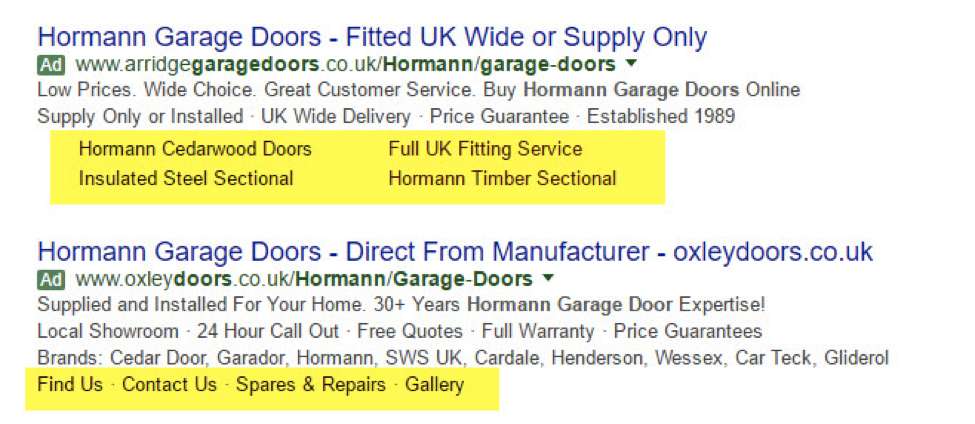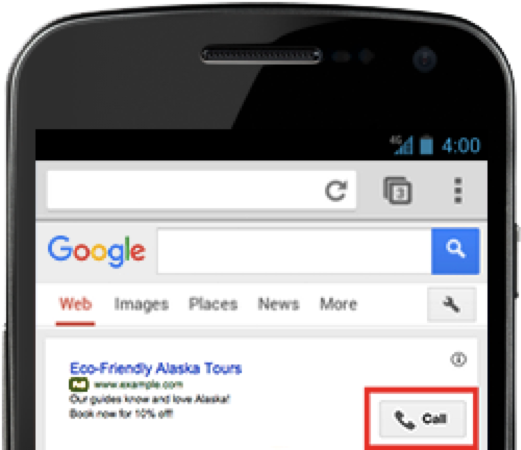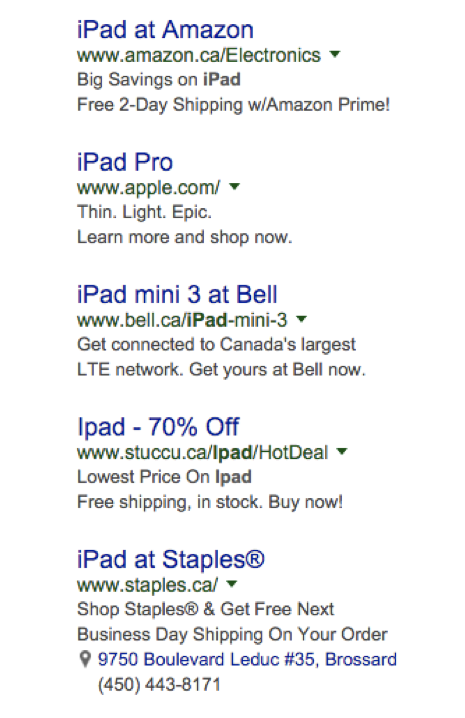Make These 5 Simple Changes to Improve Your AdWords CTR Today
So much time and money can be wasted on AdWords if you are not seeing a click through rate (CTR) that is actually leading to conversions. That said, if you want to get people on your site you need to give them a reason to click to learn more—and that can actually be much more simple than you think. While improving your CTR may require some attention and change in your AdWords strategy, it is actually much more simple than you probably realize. As an SEO company, we are often confronted with challenging questions about AdWords that require a simple explanation—and this topic is one of them!
Utilize AdExtensions
When people are deciding what to click on, the information they are presented with is incredibly important. Utilizing all of the ad extensions available helps to make your ad more relevant and thus can increase CTR. There are many different types of ad-extensions you can utilize, but below I am going to list a few for your consideration:
A). Sitelinks
Sitselinks extensions literally lets you add additional links to your site (see the example below). There are a lot of different ways you can use this, but adding links to relevant subpages that might catch your target population’s attention is most-ideal. Below is a screenshot from Hallam Internet that shows you how it works:
B). Call Extensions
Allow people to get in touch with your right away with call extensions. IF your business is primarily brick and mortar or if there are a lot of questions that need to be directed to your staff directly, this particular extension could be a good fit for you.
C). Call OUT Extensions
Call out extensions can be used to offer some description of the products or services you offer, well, as much as you can fit in 25 characters or less. That said, concise and direct copy can really do a lot to call attention to your ad over others. You can show up to four callout extensions per ad, and Google can program these to automate depending on the user type! Pretty cool! this means that you can be more directly targeting you customers with every appearance of your add.
Utilize all that AdWords extensions has to offer. This list only shows three of them, so doing a little extra looking into AdWords extensions will help you determine what is best for your ads and how you can maximize the real estate you have on Google’s home page.
Write Better Ads
This is a really critical component in getting a higher click through rate on your ads. Writing better ads that can capture your audiences’ attention are key to getting people to look at your ad over others. One way to do this is to really think about the perspective of your customers—what are they most interested in learning about businesses in your industry when they are shopping around? Make sure these features are highlighted so you can easily be identified as the most important ad to click on. Another way you can get creative and relevant ideas is to look at your competitors ads and get a sense of what works well
Use the URLs as Copy
Google AdWords allows you to place URLs in your ad copy in order to link to specific pages on your site (note: these do NOT need to be the actual URLs of those pages). That said, you really want to use these to your advantage and treat these URLs and an additional opportunity for relevant keywords and ad copy.
Get Creative and Think Outside the Box
Acquiso suggests using symbols (see their example below) in order to create extra attention and make your ad more noticeable. While I do like the idea of using symbols to be unique and capture attention, I actually like the theory behind it even more. Anything you can do to draw searching eyes to your ad and make your ad stand out id going to help increase your CTR.
Always Use Keywords and Segment Your Ads
Keywords that are the most relevant to your business should absolutely be a part of your ad copy. These keywords are going to be the most relevant parts of text to notice for your audience—it is what they are looking to see and the way they confirm the relevancy of your site for what they are looking for.
Along the same vein, you need to be segmenting your ads. One of the biggest mistakes that is made with AdWords is that one ad is meant to serve several audiences, several products, several services, and ultimately several searches. Grouping ads for targeted searches and keywords will drastically help your CTR and make sure that only the most relevant leads are getting through to your site (which will also help with increasing conversions).
The Takeaway
There are many things you can do to help improve your AdWords CTR. Start by utilizing ad extensions and writing effective copy. By thinking outside the box you can make sure that your ad is the one that stands out among the rest (this can be as simple as adding a relevant symbol or being catchy with your copy). Further, by utilizing the most relevant keywords and segmenting your ads for different target groups and searches, you will enhance the quality and quantity of people who want to click on to your adds. CTR has a direct correlation with conversion in most situations, so making improving your CTR an AdWords goal will certainly help boost sales and visibility.
Do you have any other additional tips that have helped you in the past? Which one of these strategies are you most eager to try? Let us know in the comments section below, we would love to hear from you!
Image credit: Support.google.com
Image credit: Blogspot.com












